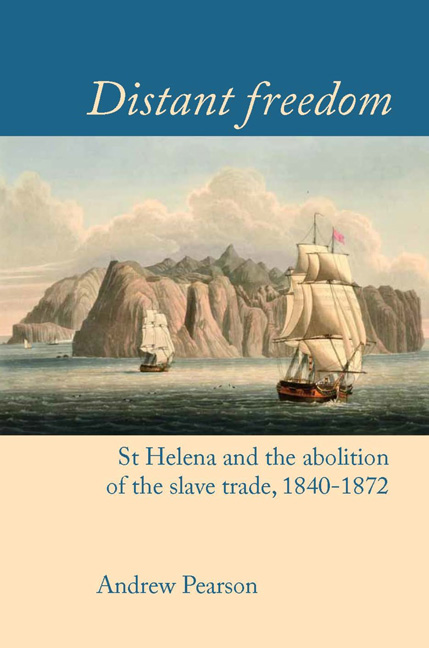Book contents
- Frontmatter
- Dedication
- Contents
- Figures
- Tables
- Acknowledgements
- Introduction
- Map
- 1 A Place of Immense Advantage
- 2 London and Jamestown
- 3 Sailortown
- 4 Life and Death in the Depots
- 5 ‘All, all, without avail’
- 6 After ‘Liberation’
- 7 Island Lives
- Conclusion
- Appendix 1 Liberated Africans Captured aboard Slave Ships: Cases Tried at Freetown, Luanda, Cape Town and St Helena, 1836–68
- Appendix 2 Prizes Adjudicated by the Vice-Admiralty Court of St Helena
- Appendix 3 Liberated African Emigration from St Helena
- Appendix 4 Emigrant Voyages from St Helena
- Bibliography
- Index
6 - After ‘Liberation’
- Frontmatter
- Dedication
- Contents
- Figures
- Tables
- Acknowledgements
- Introduction
- Map
- 1 A Place of Immense Advantage
- 2 London and Jamestown
- 3 Sailortown
- 4 Life and Death in the Depots
- 5 ‘All, all, without avail’
- 6 After ‘Liberation’
- 7 Island Lives
- Conclusion
- Appendix 1 Liberated Africans Captured aboard Slave Ships: Cases Tried at Freetown, Luanda, Cape Town and St Helena, 1836–68
- Appendix 2 Prizes Adjudicated by the Vice-Admiralty Court of St Helena
- Appendix 3 Liberated African Emigration from St Helena
- Appendix 4 Emigrant Voyages from St Helena
- Bibliography
- Index
Summary
Over 17,000 men, women and children survived the slave ship and its aftermath, to be freed by Jamestown's Vice-Admiralty court. Liberation, however, did not equate to freedom. As elsewhere, St Helena's recaptives remained firmly under the control of the colonial authorities. Denied their own agency, the Africans’ lives in the weeks and months after the court's adjudication were rigidly ordered, and decisions made in London and on St Helena would fundamentally shape their long-term futures.
From the British perspective, the ‘disposal’ of so many displaced persons from remote St Helena posed significant difficulties. These difficulties were not new, having arisen for several decades in other places where recaptive populations were generated by anti-slavery courts. Many of the outcomes on St Helena – for example, of forced labour and involuntary onward transportation – also had parallels elsewhere. in other respects, as this chapter will demonstrate, the transition to freedom for St Helena's liberated africans took a unique course.
Colonial labourers
As soon as the quarantine of the Lemon and Rupert's Valley depots was lifted in February 1841, the liberated Africans brought aboard the Julia were pronounced fit for ‘public deployment’. This was nothing more than a euphemism for hard labour on behalf of the colonial government, which felt perfectly entitled to extract a return on the monies it had laid out for the Africans’ upkeep over the preceding weeks. Such use of recently freed slaves for public works had a lengthy precedent at Sierra Leone, where it was common practice for adult males to serve in this capacity for a period of weeks or even a few months prior to their final disposal as settlers, soldiers or emigrants. These people were generally those who were retained longest in Freetown's Queen's Yard.
On St Helena, the initial deployment applied to all able-bodied men and the older boys, placed under the supervision of the Engineer's Department. The greatest number were set to laying macadam on Side Path, one of the principal roads leading out of James Valley; the longer-term intention was for them to build an extension of that road to the Briars and thence towards Longwood.1 The experiment began badly. Side Path, winding upwards against the cliff edge, is totally devoid of shade and the africans – just six weeks off the slave ship – were worked in the heat of the day.
- Type
- Chapter
- Information
- Distant FreedomSt Helena and the Abolition of the Slave Trade, 1840–1872, pp. 201 - 241Publisher: Liverpool University PressPrint publication year: 2016



